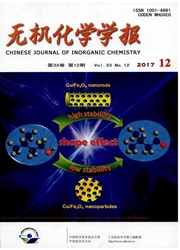

 中文摘要:
中文摘要:
钴基双金属氧化物MCo2O4(M=Ni、Zn、Mn等)既继承了单一钴金属氧化物(Co3O4、CoO等)高比容量的优点,又引入了新的改性金属元素用于改善其导电性差、倍率性能不佳等缺点,是一种潜在的新型电化学储能材料。本文分类介绍了NiCo2O4、ZnCo2O4、MnCo2O4等钴基双金属氧化物及其复合物的现有研究(包括制备方法、形貌结构、颗粒尺寸及其电化学性能),阐述了改性手段的可能性机理,并对钴基双金属氧化物后续研究提出了一些看法。
 英文摘要:
英文摘要:
The development of new electrode materials are required due to the high performance Li-ion batteries (LIBs) and supercapacitors (SCs) for application in electric vehicles (EVs) and hybrid electric vehicles (HEVs). Among a wide variety of electrode materials, transition metal oxides (Co3O4, CoO, NiO, et al.) are accounted as promising ones for both LIBs and SCs owing to the high theoretical capacities. However, its practical use is hindered because of the low electronic conductivity, the large volume change during charge/recharge progress and fair rate capability. With the purpose to improve the electrochemical performance, many researchers have focused on studying cobalt-based bi-metal-oxides (MCo2O4, M=Ni, Mn, Zn, et al.) due to the chemical and thermal stability, low cost and good electrical conductivity. Therefore, it is meaningful to review the recent development of MCo2O4 in the field of electrochemical energy storage including their energy densities, cycling stability and rate capability. In this paper, the recent advances of MCo2O4 and these composites as electrode materials of LIBs and SCs are reviewed. The researches are classified by types, preparation method and characteristics of materials including NiCo2O4, ZnCo2O4, MnCo2O4, and so on. Their advantages and disadvantages are summarized and the possible electrochemical reaction mechanisms are explained. In addition, it is also discussed how to improve the electrochemical performance of MCo2O4 in the future.
 同期刊论文项目
同期刊论文项目
 同项目期刊论文
同项目期刊论文
 期刊信息
期刊信息
